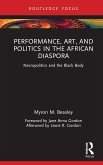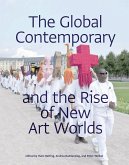Precisely 30 years after the debut of her provocative photo-portraits, this book chronicles the early career of Iranian-American artist Shirin Neshat. In its first 20 years, Neshat's work weaved viewers into complex readings of women and power in Iran. Yet her images also drew criticisms of exoticizing Muslim women, and later video installations were accused of lacking political assertion during stormy relations between the West and the Islamic world.
Now broadly recognized as a social justice artist, this volume chronicles Neshat's evolution from photography to film, from personal to political expression, and expands existing scholarship to investigate underserved contexts for her work, including the cinematic turn and emergent theories of globality in contemporary art. Neshat's hyphenated identity was often attenuated by reductive and exoticizing discourses; therefore, this volume draws attention to her transnational methodologies, informed by strategies of appropriation, performativity, and embodiment while articulating Persian visual and literary traditions. Complicating simplistic ethnographies, her disruption of neo-Orientalist paradigms and representations has led audiences to reconsider Islamophobic, Islamism, and gender repressions that are political, psychological, and above all cross-cultural.
This book will be of interest to scholars working in art history, photography, cinema studies, performance, transnational and global studies, women's studies, and Iranian studies.
Now broadly recognized as a social justice artist, this volume chronicles Neshat's evolution from photography to film, from personal to political expression, and expands existing scholarship to investigate underserved contexts for her work, including the cinematic turn and emergent theories of globality in contemporary art. Neshat's hyphenated identity was often attenuated by reductive and exoticizing discourses; therefore, this volume draws attention to her transnational methodologies, informed by strategies of appropriation, performativity, and embodiment while articulating Persian visual and literary traditions. Complicating simplistic ethnographies, her disruption of neo-Orientalist paradigms and representations has led audiences to reconsider Islamophobic, Islamism, and gender repressions that are political, psychological, and above all cross-cultural.
This book will be of interest to scholars working in art history, photography, cinema studies, performance, transnational and global studies, women's studies, and Iranian studies.








